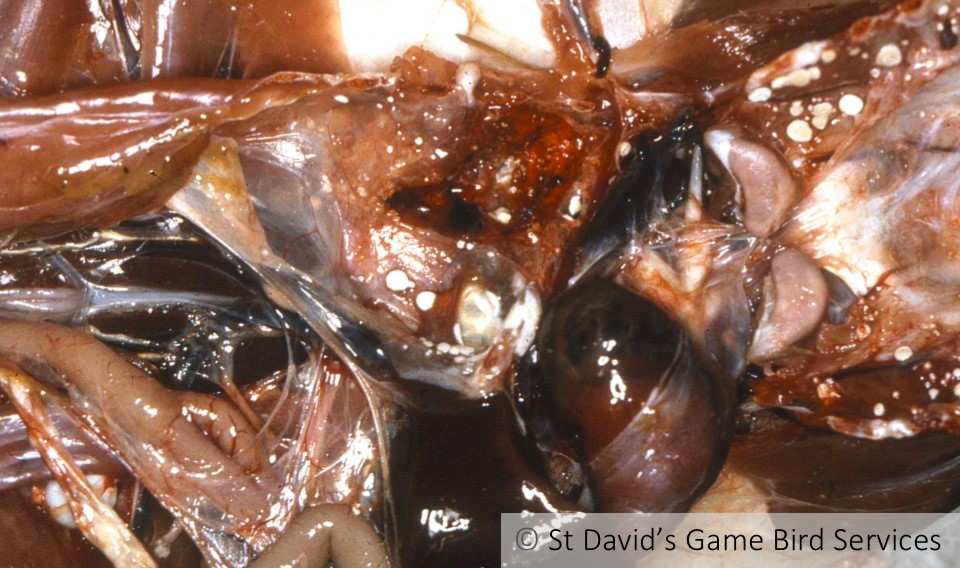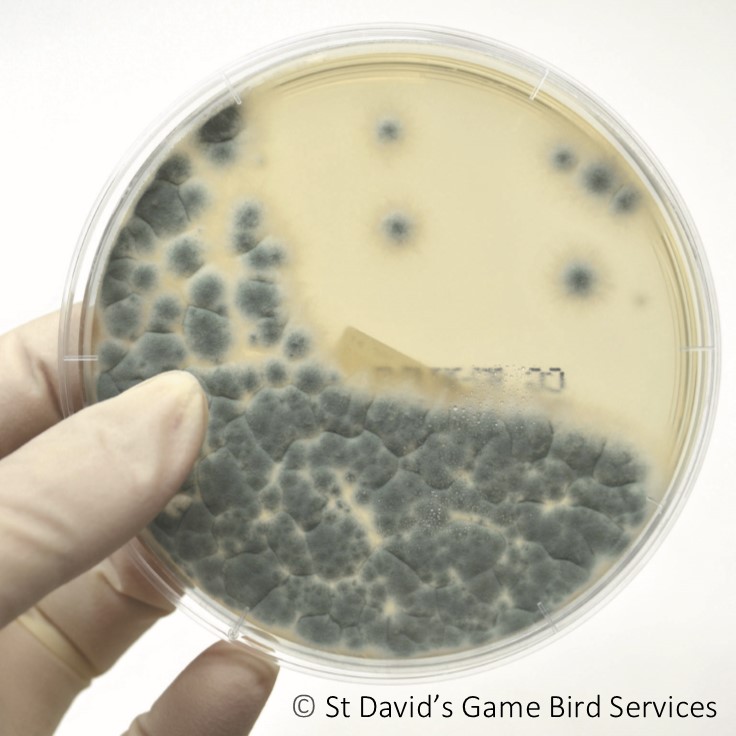Aspergillosis is a range of infections in birds (often chicks) due to an inhalation of fungal spores. Contaminated air, mouldy bedding or feed are usually to blame. Aspergillosis is an umbrella term for many diseases which affect the respiratory tract, eye and brain. Usually, it affects younger chicks who will gasp for breath, but it may also cause eye lesions or chronic lesions in older birds. The condition is not contagious between birds and new cases disappear when the source of infection is identified and removed. However, due to the lack of treatment available, in some cases, affected birds will need to be culled.
Prevention of Aspergillosis is vital, as whilst it does not generally cause as high a mortality rate as other avian diseases, there is no effective treatment. Good hygiene control of bedding and feed is the most effective way of preventing Aspergillosis.
Clinical Signs
The typical sign of Aspergillosis is the affected birds gasping for breath, with their necks outstretched and beaks open in the terminal stage of the disease. Other signs of Aspergillosis are weakness, drowsiness and loss of appetite in the birds. The disease can also affect the bird's eye, and this is seen through lesions or swelling around the eye and/or discharge. As Aspergillosis can affect the brain, nervous signs may also be observed - although this is rare. The disease is likely to be present in its chronic form if eye or brain related clinical signs are observed.
Post Mortem Findings
Post mortem results show small white lesions on the lungs, trachea and in the air sacs of the bird, sometimes this can form a 'plug' in the tracheal bifurcation. This has a yellowish/grey appearance and there may also be greenish plaques in the peritoneal cavity. Conjunctivitis/keratitis may be observed as well as lesions on the brain, if the birds are displaying nervous signs.

Fig 1 Fungal plaques in the air sacs of a chick

Fig 2 Fungal plaque in the peritoneal cavity
Diagnosis
Diagnosis is usually based on clinical signs, lesions (if there are any) and microscopic examination for the fungus. It may also be confirmed by isolation of the fungus, typically by putting small pieces of affected tissue on Sabouraud agar, growth occurs in 24-48 hours and colonies are powdery green/blue in appearance. In some cases, prolonged incubation in the laboratory is required for growth of the fungus.

Fig 3 Aspergillus colonies growing on fungal agar
Treatment and Control
There is little scope for treatment of Aspergillosis, and therefore emphasis is placed on preventative measures to control the disease. Antibiotics have no effect on Aspergillus and can make the disease worse by disrupting the normal bacterial flora and allowing the fungus to proliferate. Environmental spraying with effective antifungal antiseptic may be effective to help infected birds and some anti-fungal drugs have been used in high-value birds. Preventative measures are essentially good game keeping/ husbandry with care taken to maintain dry, good litter and feed, and the use of good hygienic bedding is crucial.





